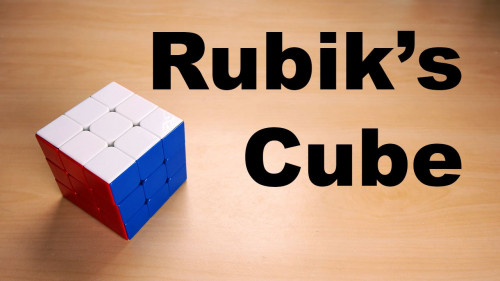
Skillshare – Mike Boyd – Learn to Solve the Rubik’s Cube the Easiest Way (CFOP Tutorial)
English | Tutorial | Size: 505.18 MB
In this class, Mike Boyd walks you through every stage of solving the Rubik’s cube. Starting with the basics and leading all the way up to a completed solve, you’ll be speed solving cubes in no time. Included are all the algorithms and methods required to learn how to solve a Rubik’s cube.
Although it may seem complicated, Rubik’s cube solving can actually be quite simple once you get the hang of it. There is no one-size-fits-all Rubik’s cube solution, and there’s plenty more you can dive into after this class, but these will get you all the way to end.
In this class, you’ll learn:
– Rubik’s cube notation: the CFOP method relies on Rubik’s cube algorithms to get to a finished solve, so I go over how to read the letters and numbers that make up cube algorithms.
– The white cross: the first step to getting a cube solved, forming a white cross will provide the foundation to solving a Rubik’s cube.
– First 2 layers: once you have your cross built, it’s time to start getting the layers solved. Like a true Rubik’s cube solver, we’ll do this by intuition and leave the algorithms for later.
– Orientation of the last layer: now the algorithms come into play. Here’s where I show you how to correctly apply a SUNE or anti-SUNE algorithm to orientate the last layer.
– Permutation of the last layer: walking through the final stage of the solve, we’ll go over how to use our algorithms to correctly align the last pieces and finish the cube!
Here’s a YouTube video I made of my progress in learning how to solve the 3x3x3 cube in under 2 minutes (plus some extra fun trivia about Rubik’s cubes):
A brief history on the Rubik’s cube: the original inventor was Ernő Rubik, a professor at the Department of Interior Design at the Academy of Applied Arts and Crafts in Budapest during the 1970’s. Rubik created the cube as a teaching tool so that his students could understand how to move parts of a 3D object independently without fundamentally altering or destroying it. Not until he first scrambled the pieces and attempt to put them back in order did he realize his cube made for a challenging puzzle. It the original patent, it was first named the “Magic Cube”; not until 1980 was it finally christened Rubik’s cube after its creator.
There have been several variations on the standard 3x3x3 cube since the original, the most popular of which is the 5x5x5 (also known as the Professor’s Cube), which increases the amount of possible combinations from 43 quintillion to 283 duodecillion or 2.83 * 10^74. I took on this cube as well, check it out below.
I hope you enjoy the class and it helps get you to your first Rubik’s cube solve.

RAPIDGATOR
rapidgator.net/file/d0b2d5d9bb0f972e3fc0b9ee14522502/Skillshare_-_Mike_Boyd_-_Learn_to_Solve_the_Rubik's_Cube_the_Easiest_Way_(CFOP_Tutorial).rar.html